I find it really fascinating to watch waves being bent by objects in their way. See how the wave is spreading out from the little slit?
Or here how waves are coming in with straight wave crests that get bend once they run into the lee of the pier?
When I was talking about foam stripes the other day, you might have noticed that the foam stripe wasn’t a foam stripe all the way, but became “just a stripe”. And since I have been thinking about surfactants a lot recently, I think that’s actually what we are seeing in places where the stripe is just a stripe: Some kind of film on the water.
Inside “the stripe” the water looks a lot smoother and waves are dampened out.
At first I thought that it was maybe due to being sheltered from the wind, but clearly that wasn’t the case. If anything, the stripe was in a location where it was more windy (see where it comes out underneath the pier? That should be funneling wind around that corner, not sheltering from the wind!). But surfactants would make sense if they collected in the convergence zone of the stripe.
See how the reflections from the sun are different where there is stuff on the water and the waves are dampened out?
I really like it when waves reach a sea wall at an angle, because the resulting criss-cross looks so cool :-)
And especially cool when you see it gradually building up, like below where the sea wall is partly protected by the gravel (or whatever you call those heaps of stones running in parallel to the sea wall?). The energy of waves hitting the sea wall at that part is dissipated, hence no reflected wave is sent off. However waves that hit the sea wall directly are reflected. Can you see how the reflections spread?
See it more easily in the movie below:
https://vimeo.com/215409582
One sunny morning, I noticed The Stripe again:
Running all the way up and down the coast.
In places where there is a large fetch the stripe is clearly foamy:
But looking downwind from the pier the picture above was taken from, the foam stripe becomes just a stripe!
And looking in the same direction, but from further out on the pier, we see that there is in fact a lot of foam on the water, somewhat organised in rows.
Later the same day the wind had picked up and it became even clearer:
See?
The other day I found the perfect standing waves on a current:
This egg-carton-like pattern really stays pretty constant over time and I think the changes in the wave pattern are mostly due to changes in the sand bed below!
You see the sharp edge that is currently being eroded, and sometimes you catch bits and pieces breaking off.
I think this is super fascinating. Movie below!
In July I will be involved in teaching an “expedition learning” course for a week. It will be all about coastal protection in the Kiel region, so two colleagues and I went on a private expedition to scout out what can be explored where. This is a very picture-heavy post, be warned! It’s more a note-to-self to document the different beaches we looked at than something I expect anyone else to be interested in.
We started out in Friedrichsort, where there were nice breaking waves to be observed. My part of the course, you might have guessed it, will be on observing waves…
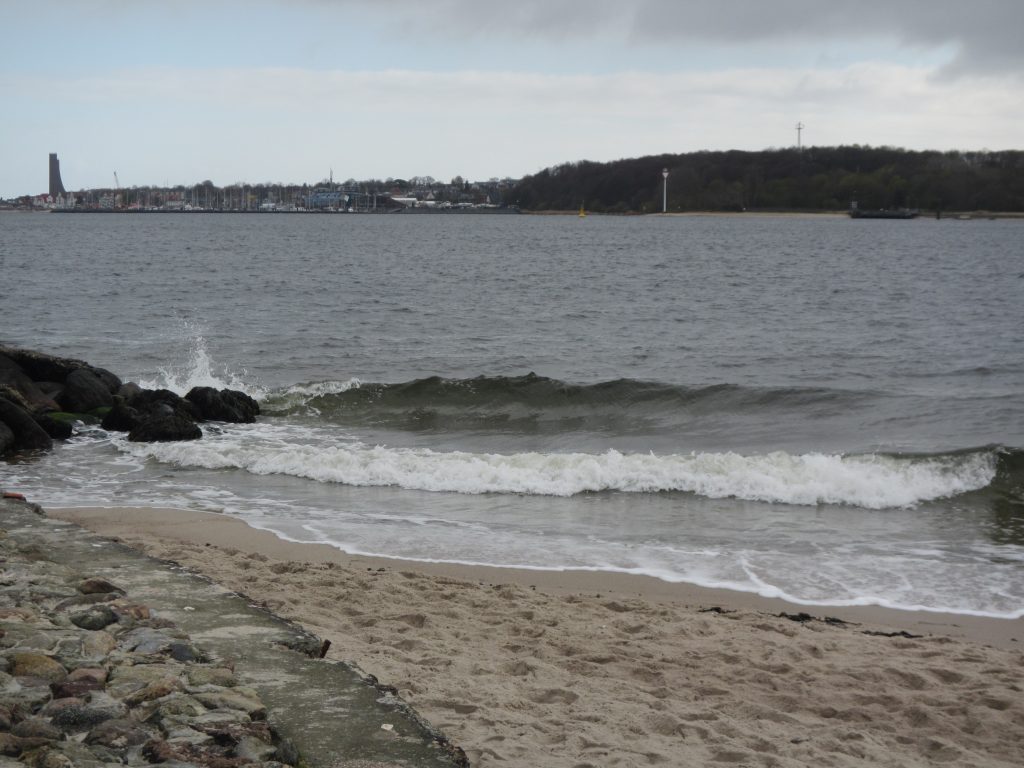
In Friedrichsort there is a lighthouse on a small headland, and there are sand banks around it that make for very interesting wave fields, like for example below, where the sand bank almost seems to filter out some wavelengths.
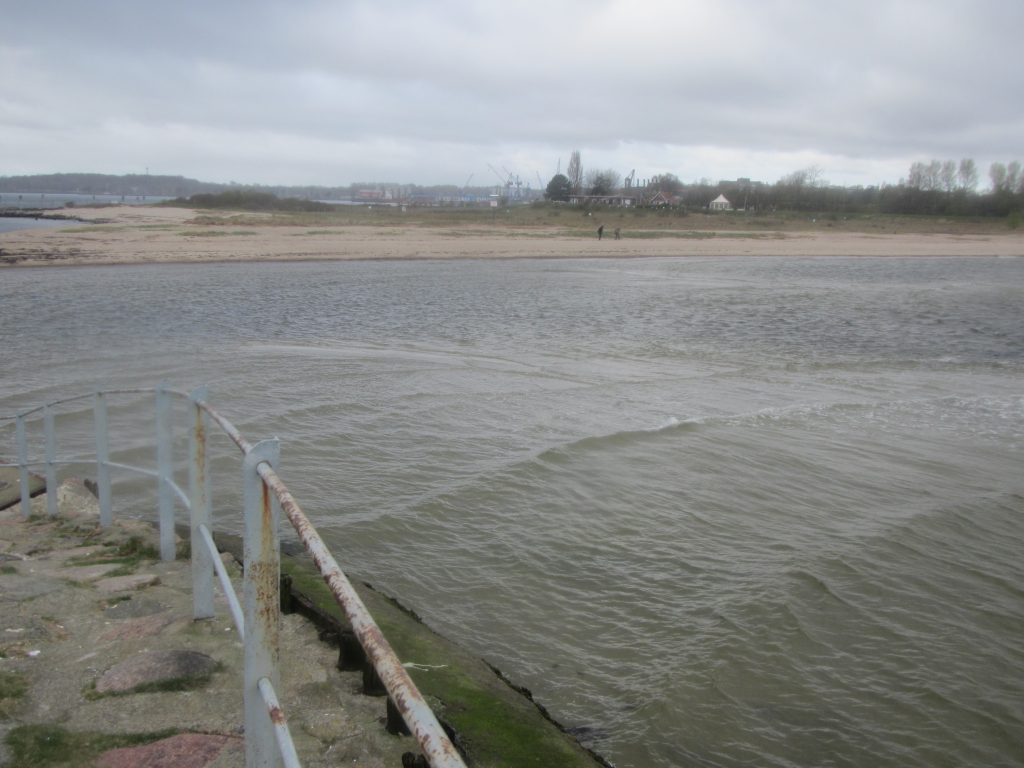
Looking seaward over the sandbank, we see breaking waves over the shallow part, and waves being bent around the sand bank.
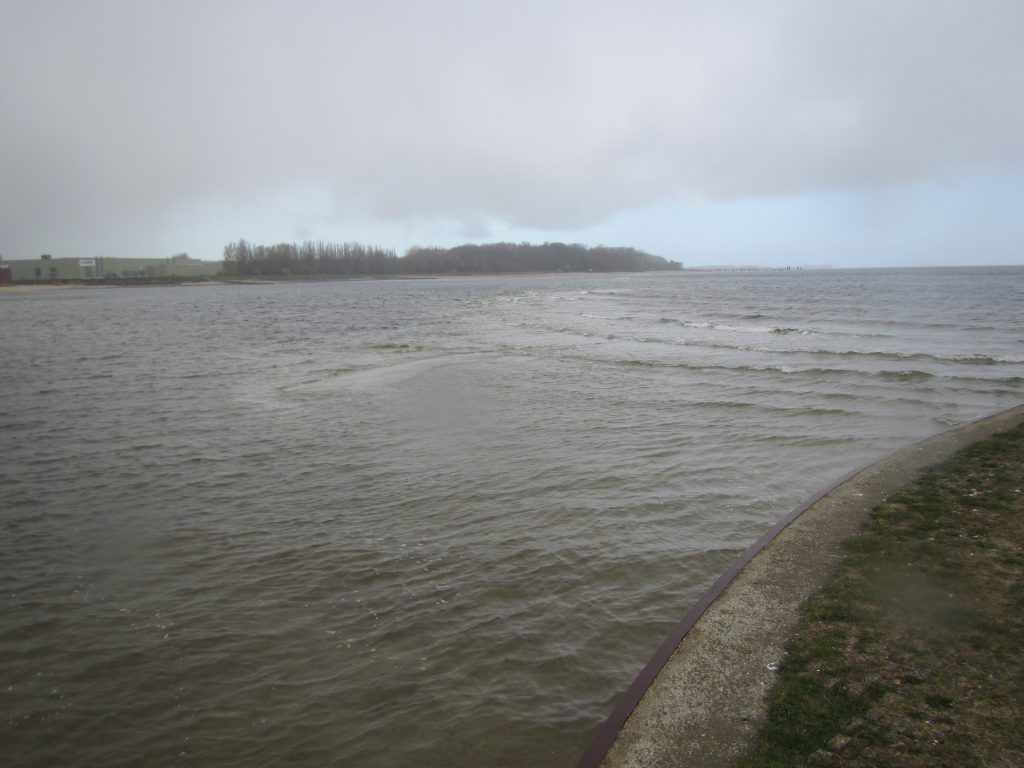
A similar thing could be seen on a tiny headland: Can you see how one and the same wave crest gets wrapped around the headland?
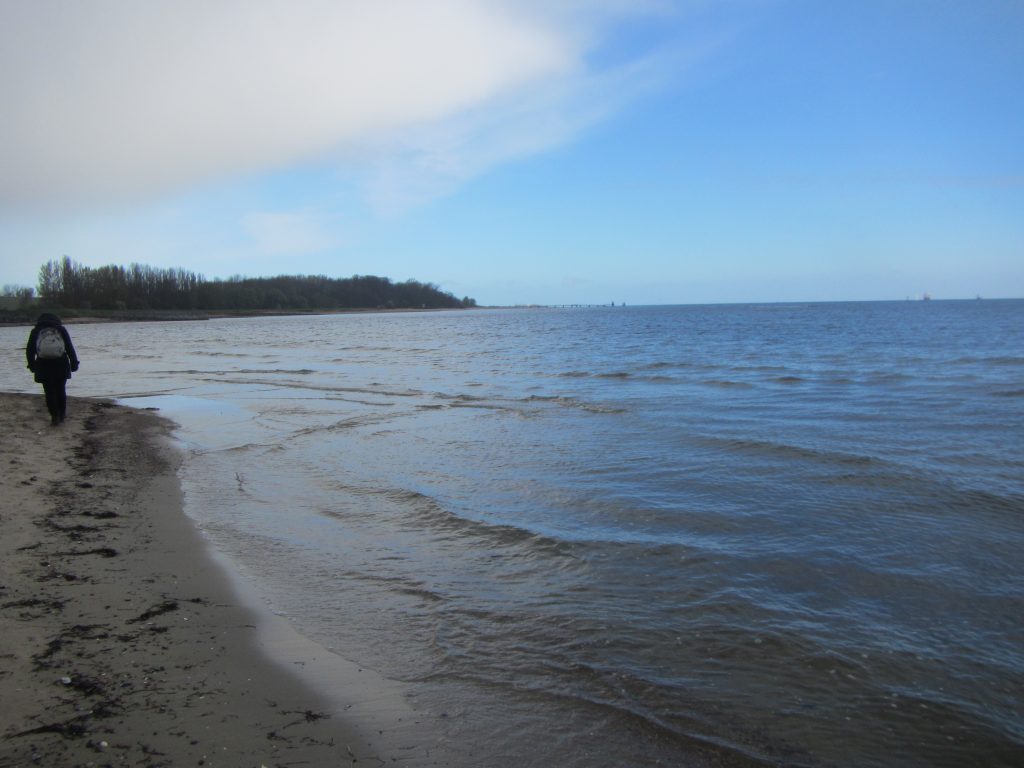
See? So cool!
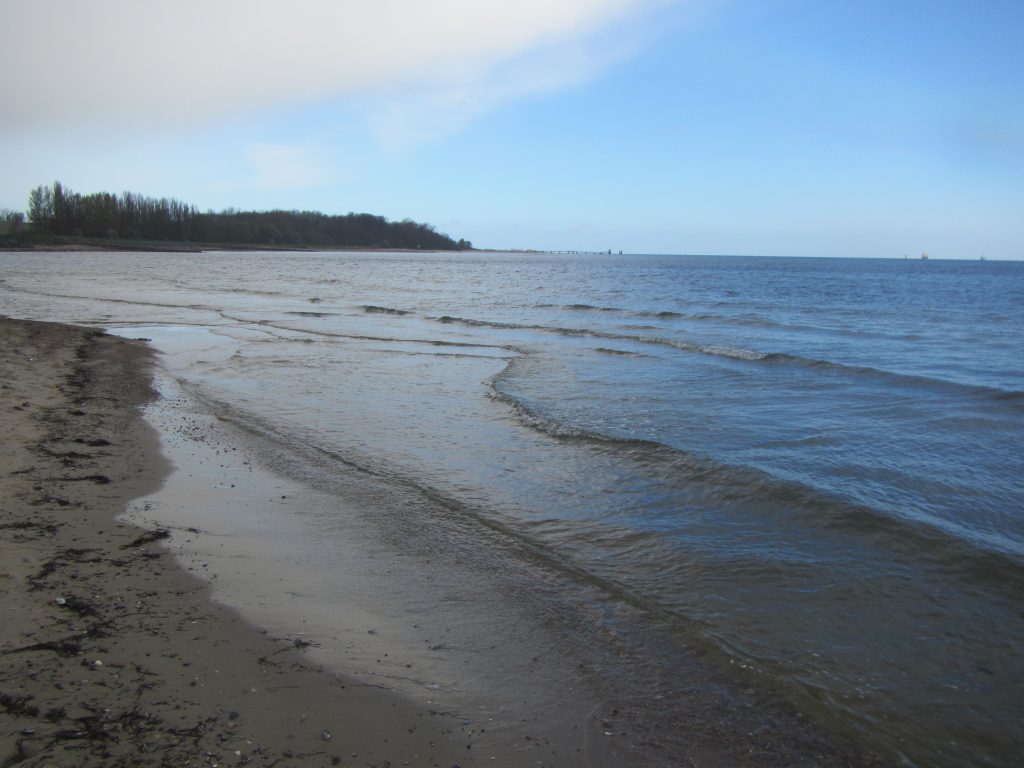
Btw, you might have noticed the weather changing a lot over the last couple of pictures. It’s April, I guess… But a couple of raindrops here and there make nice tracers for the time since the last wave washing up over the beach ;-)
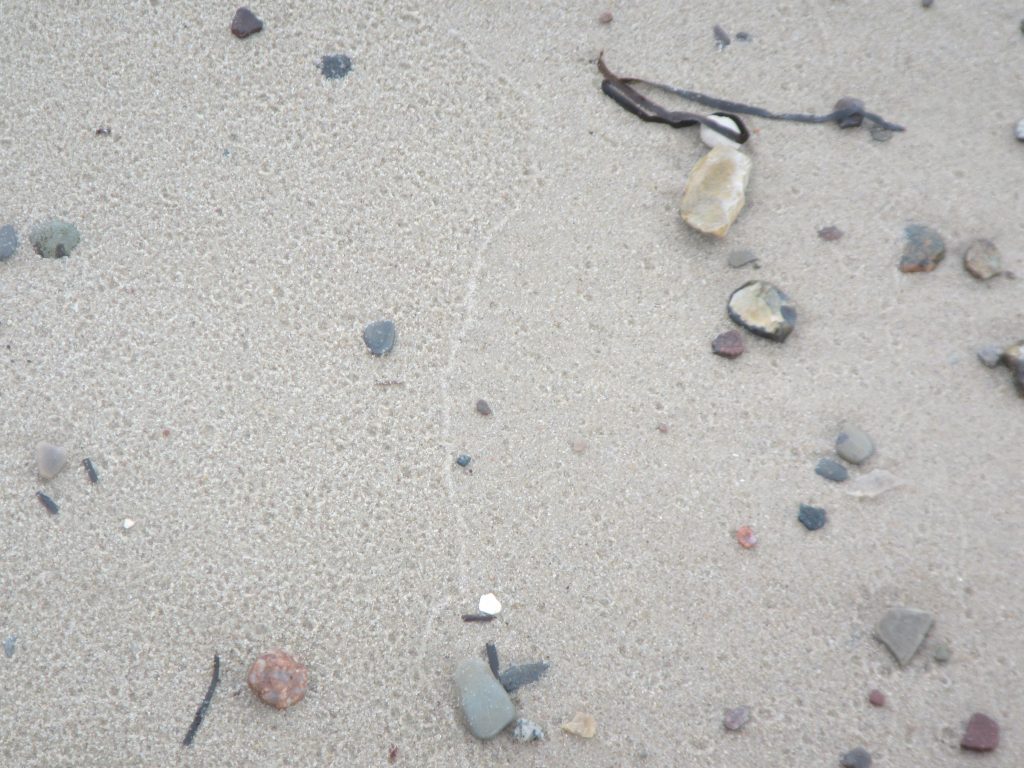
Always fascinating: When you can see wave-less spots that are shielded from the wind, and then local wind waves and others that are travelling in from further away. And breaking on a sand bank…
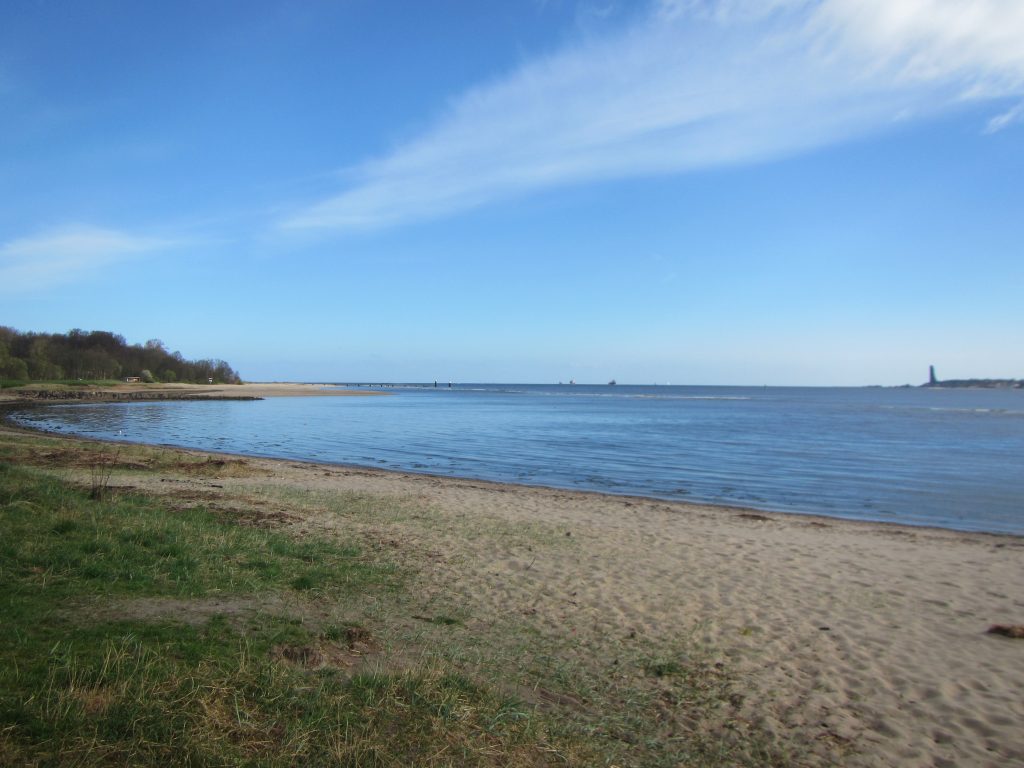
Also, did you see how nice the weather was for a couple of minutes every now and then? ;-)
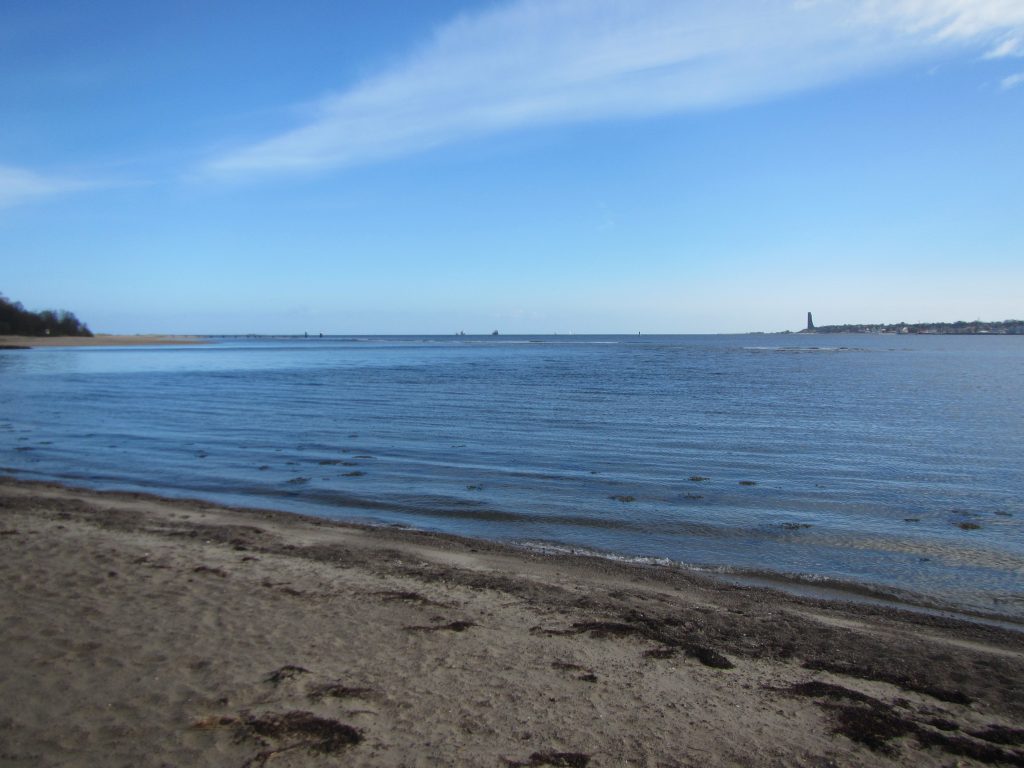
And here is a close-up of the waves breaking on the sand bank.
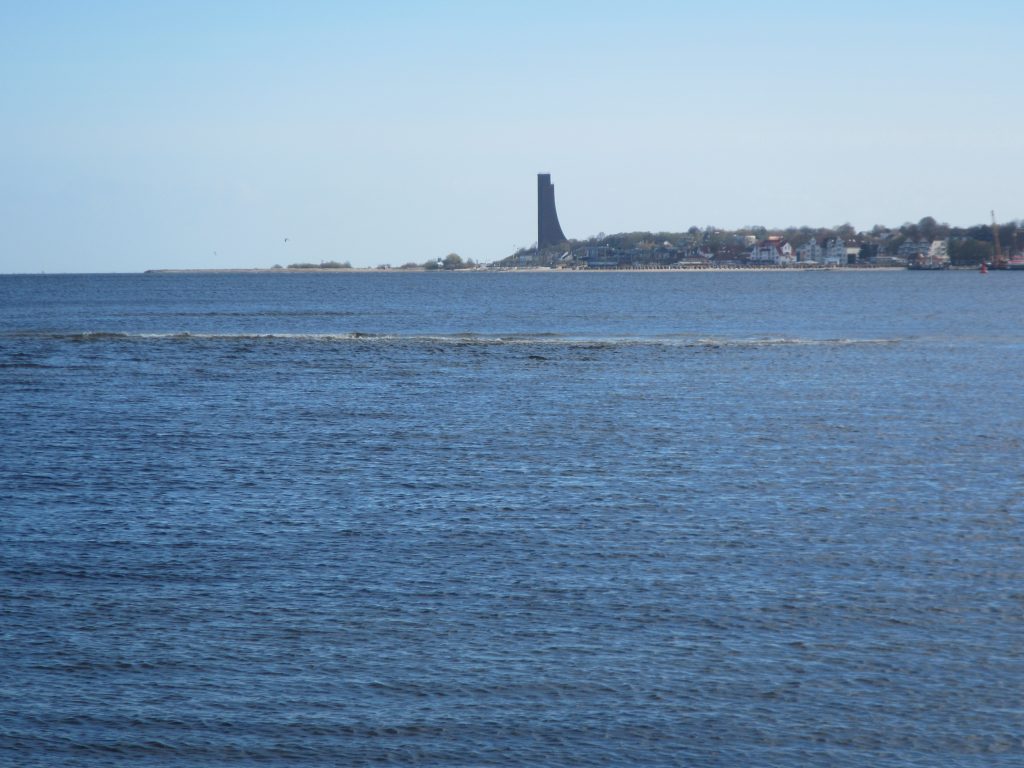
Oh, and looking back to where we came from: That’s the lighthouse on it’s headland right there! And my two colleagues figuring out what’s wrong with the GPS they brought. Their part of the course will focus on more geological things than mine…

But I really like this view!
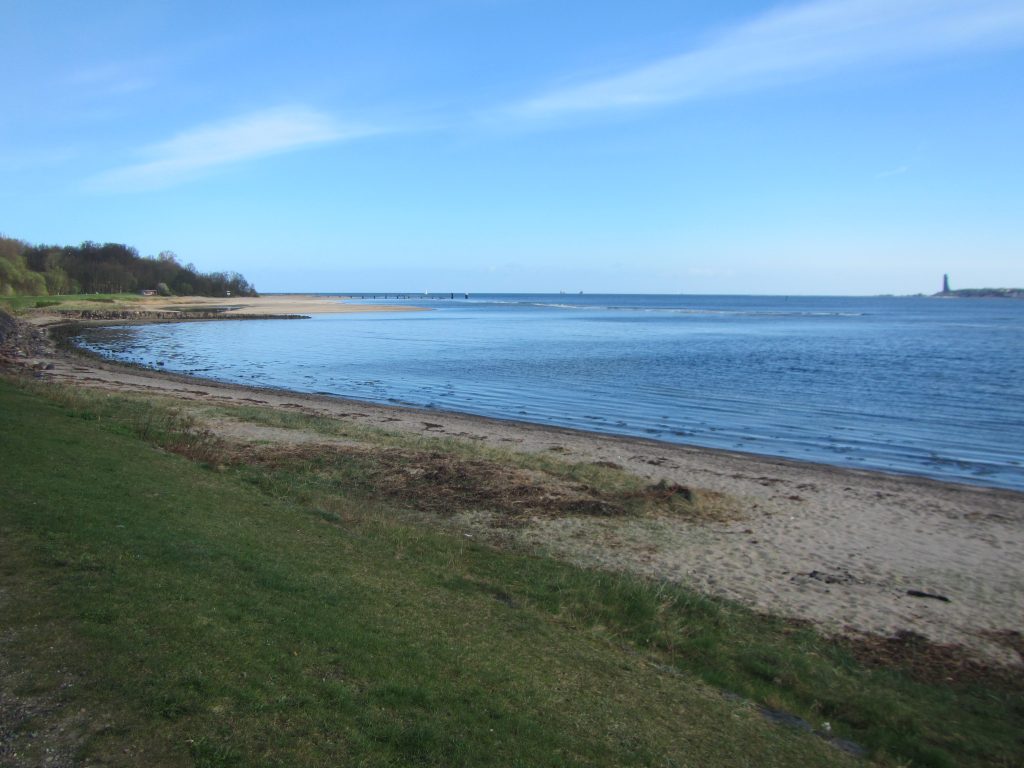
See how nice and regular the waves are that reach the beach even though the local wind field is really messy (as you see a little further offshore) and the waves have gone over the sandbank?
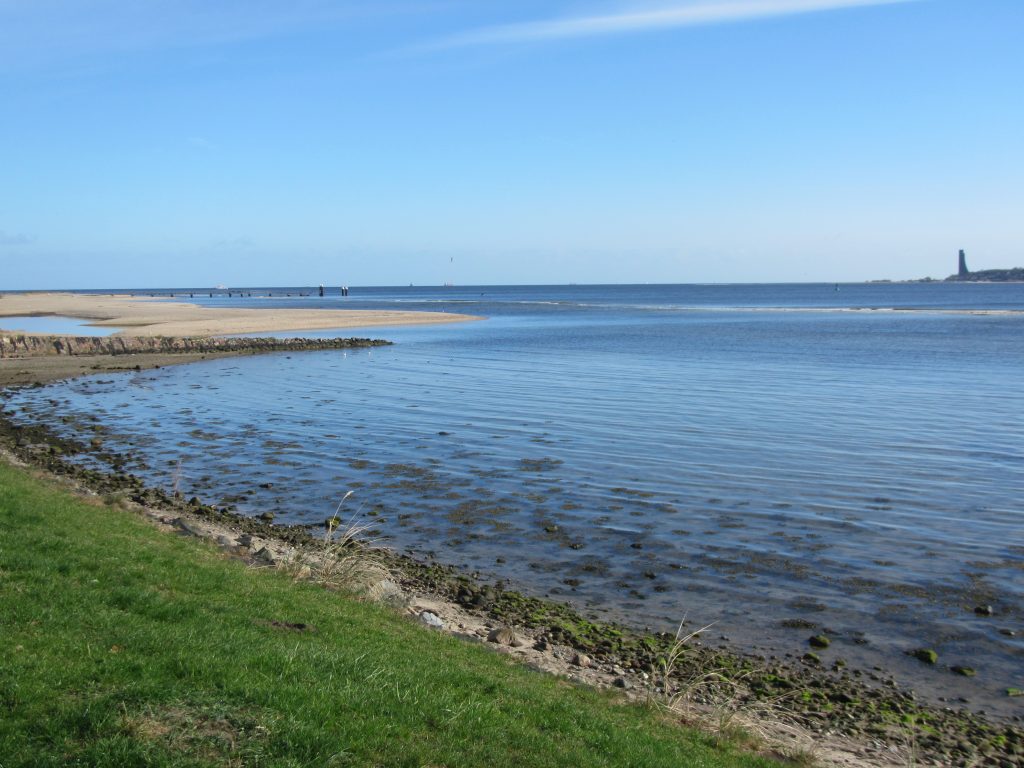
Oh, and always one of my favourites: When nice and regular waves hit a stone and it sends off wave rings. Love it!
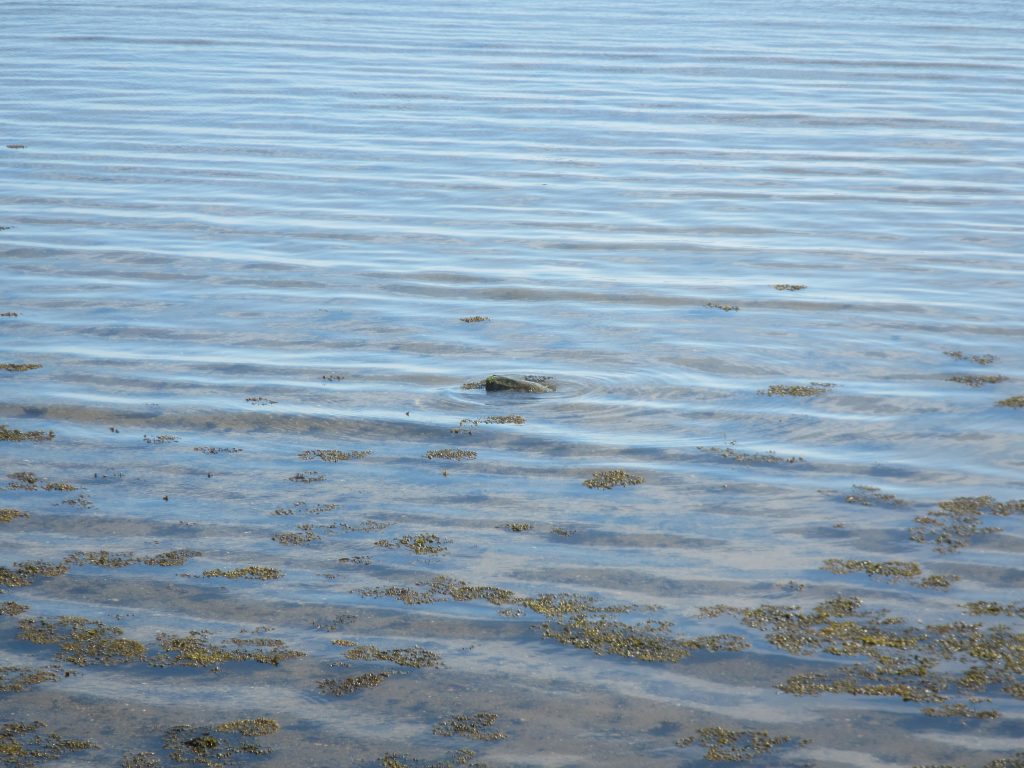
One more, because it’s so nice!
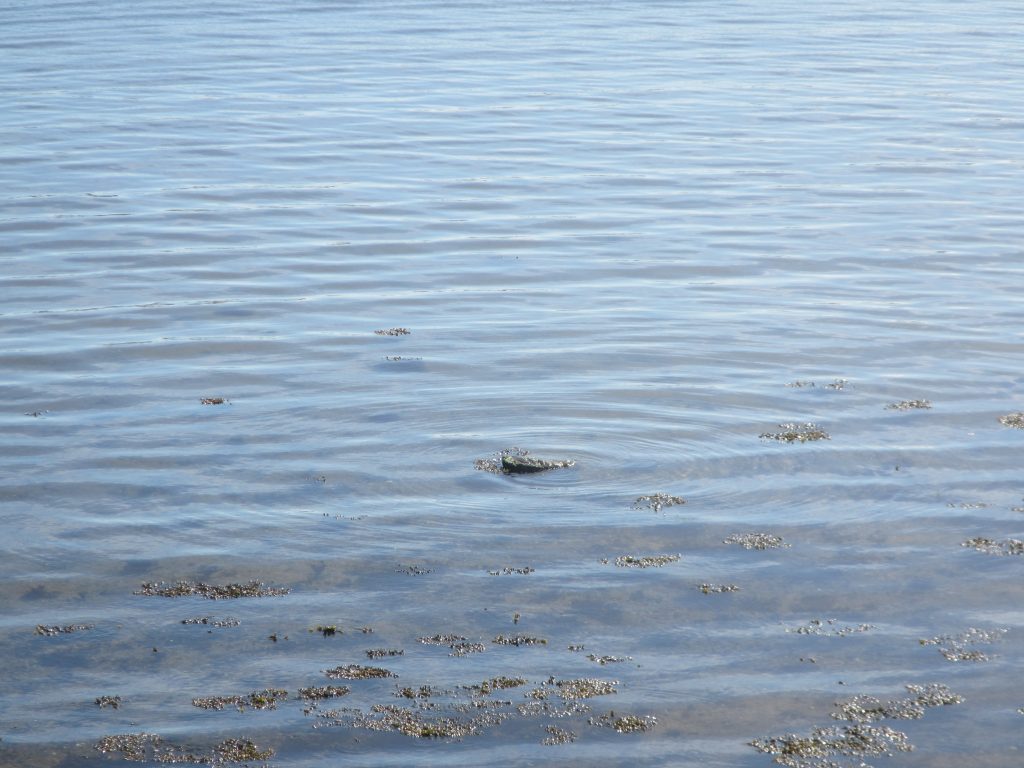
And here waves bending around a wave breaker thingy.
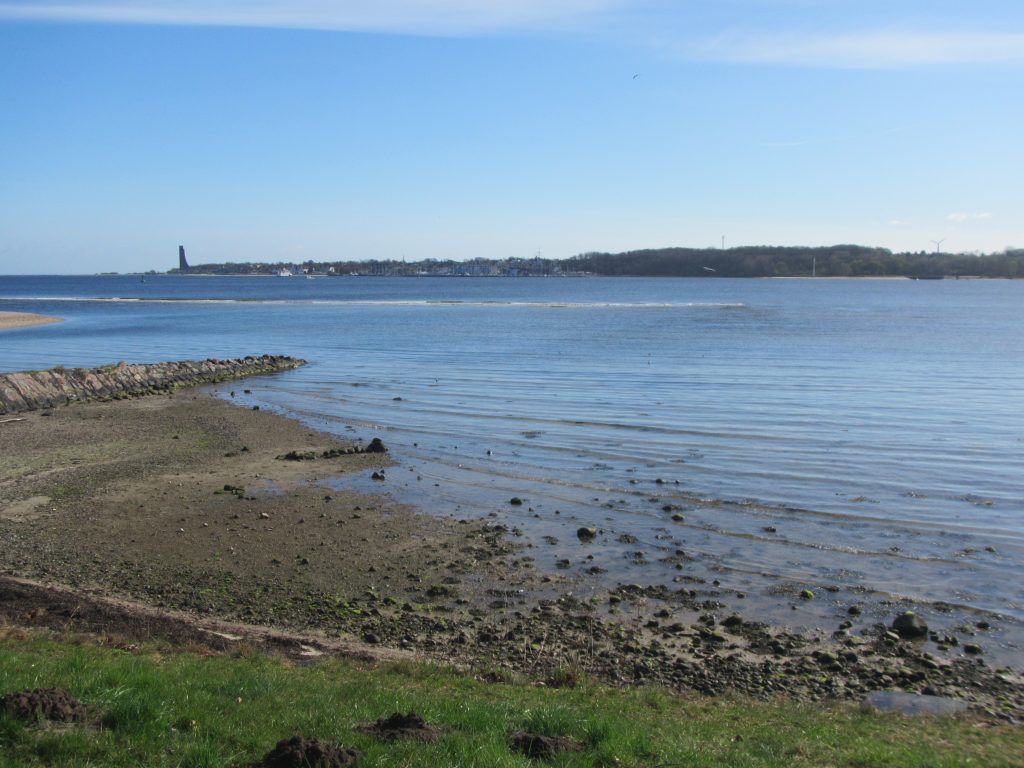
And this is a picture that really nicely shows how if you don’t have wind, you don’t have waves. The lagoon there is sheltered so well that you can actually see the reflection of the bird sitting on the edge!
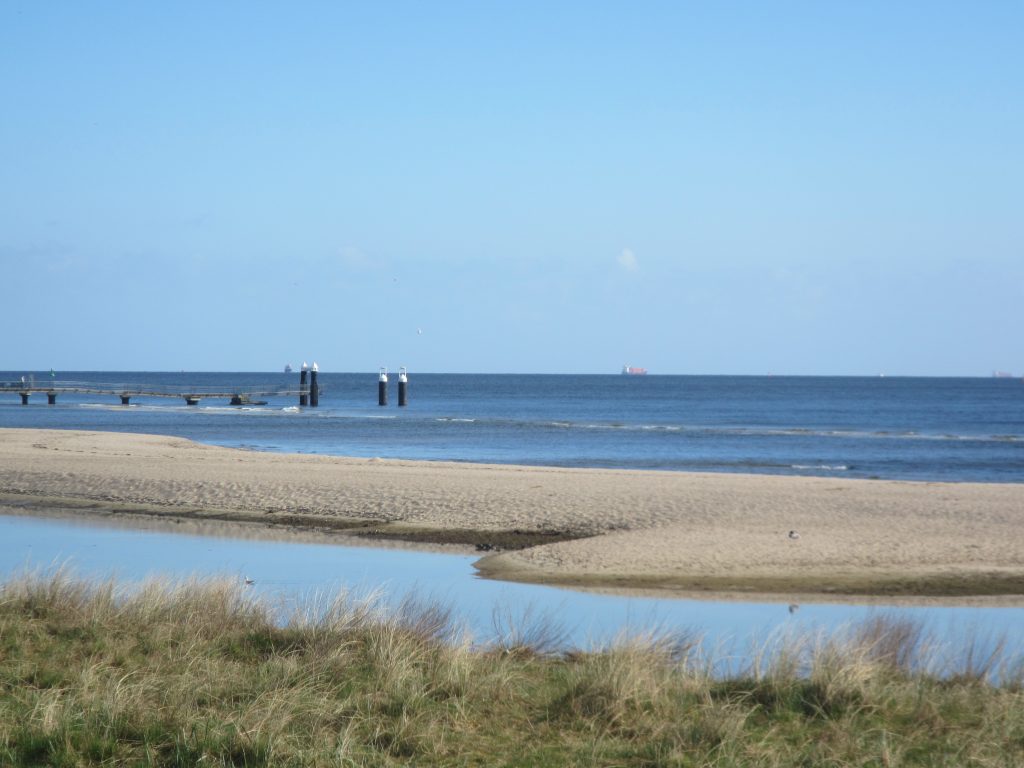
And here we have a very nice superposition of waves coming from different directions and with different wavelengths.
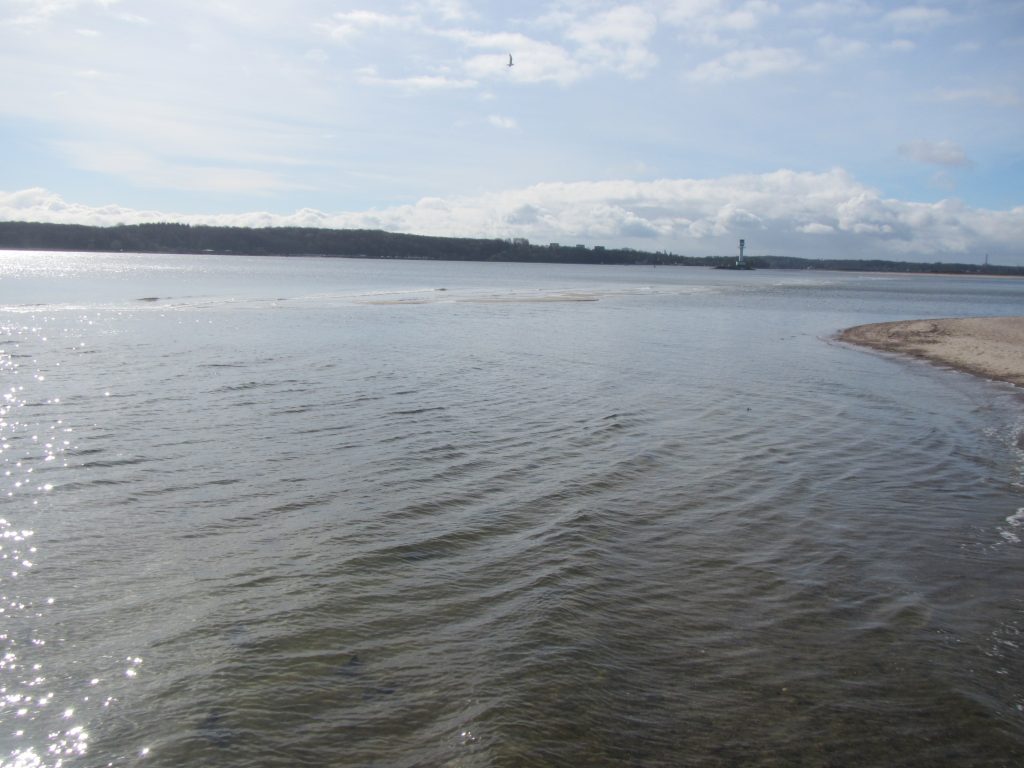
And waves coming through the “slit” between sandbanks and spreading as segments of a circle. Nice!
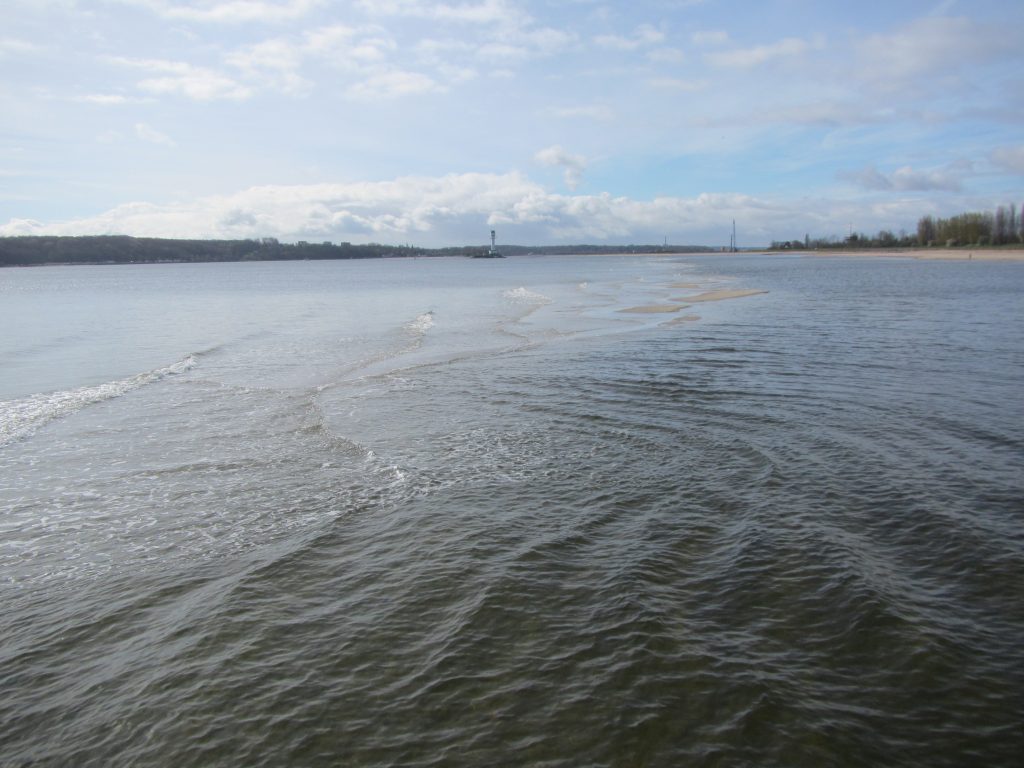
Oh, and more waves breaking on the sand bank.
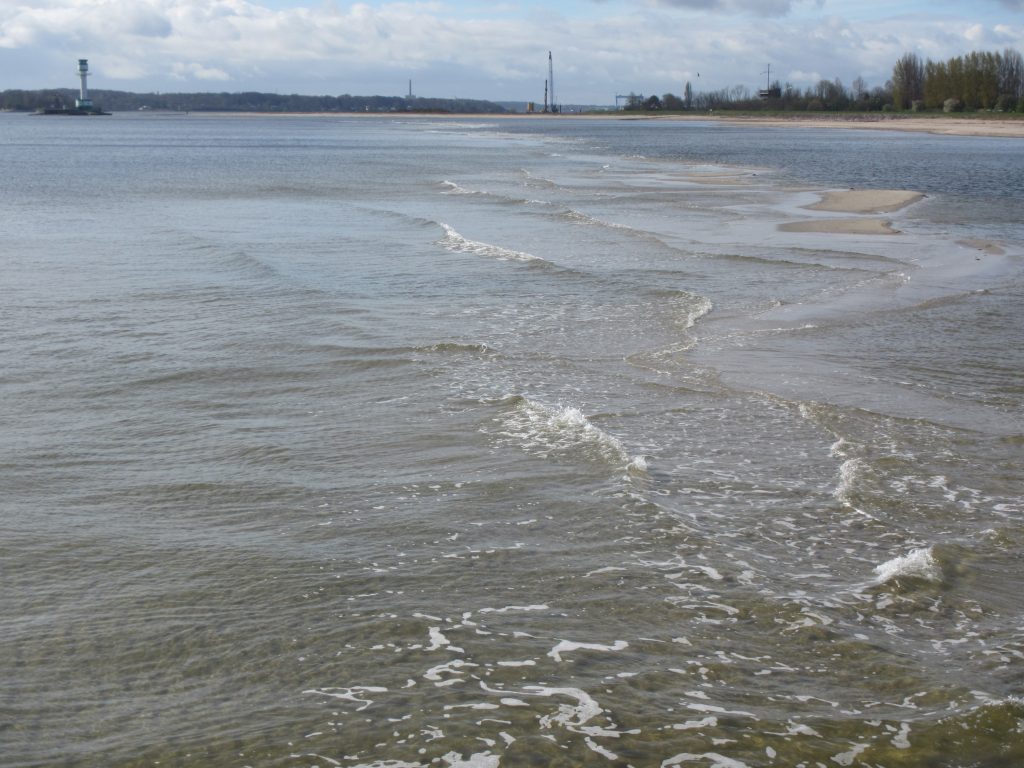
After a while, we reached Falckenstein:
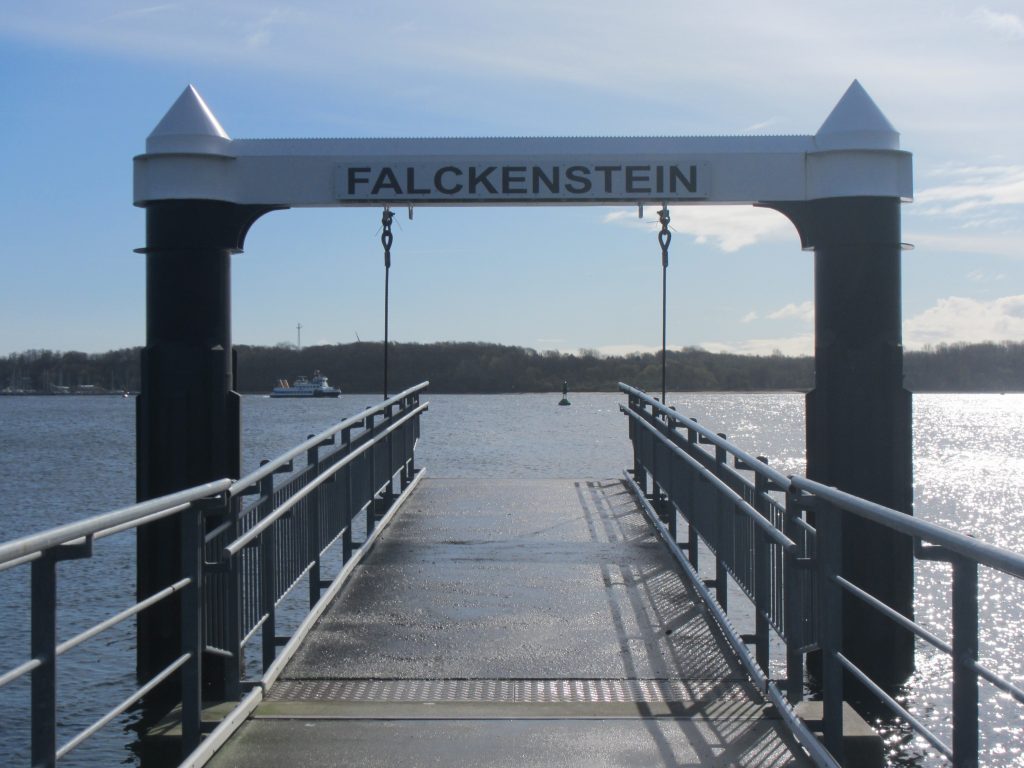
Not so far away from where we started out at that lighthouse over there:
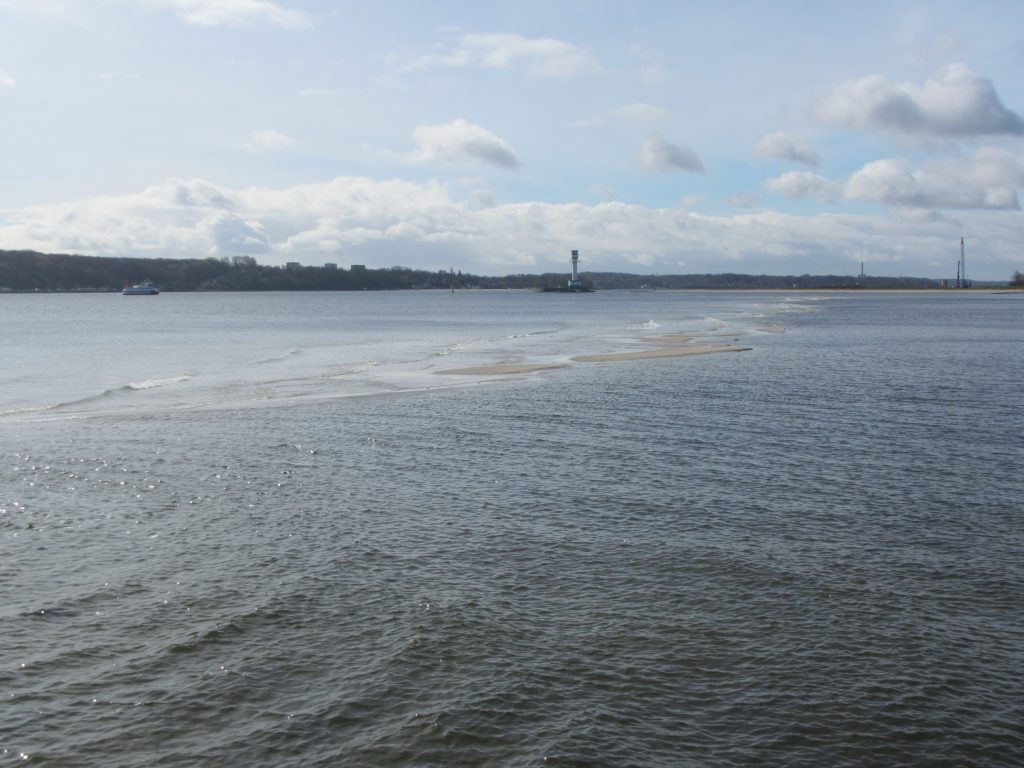
Another interesting superposition of wave fields.
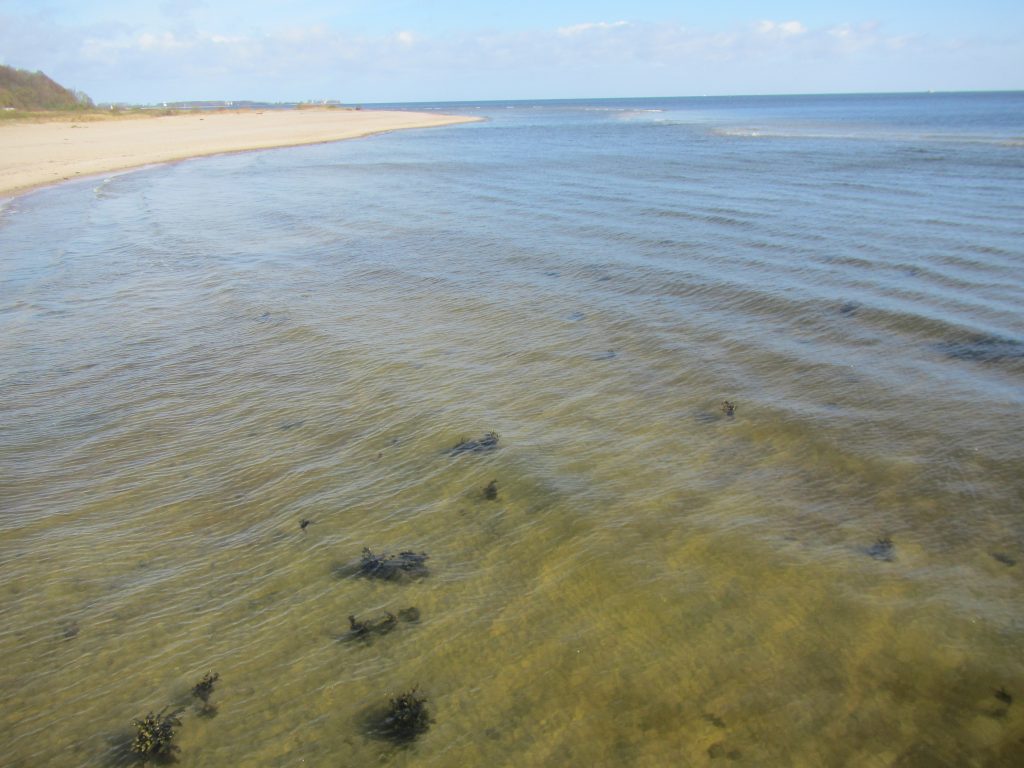
Oh, did I mention we did a lot of walking in the sand? About 20k steps. Well, I guess that isn’t even too bad…
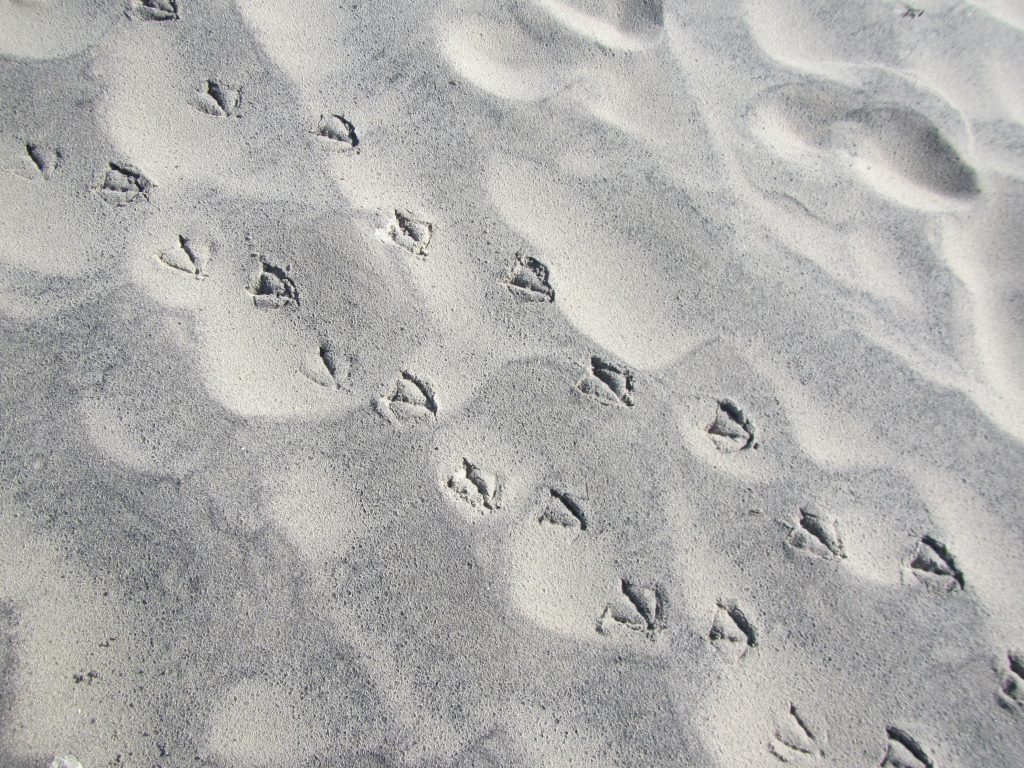
Below I really liked the criss-crossing of waves. It’s actually one wave crest crossing itself after being bend by the shallowing water.
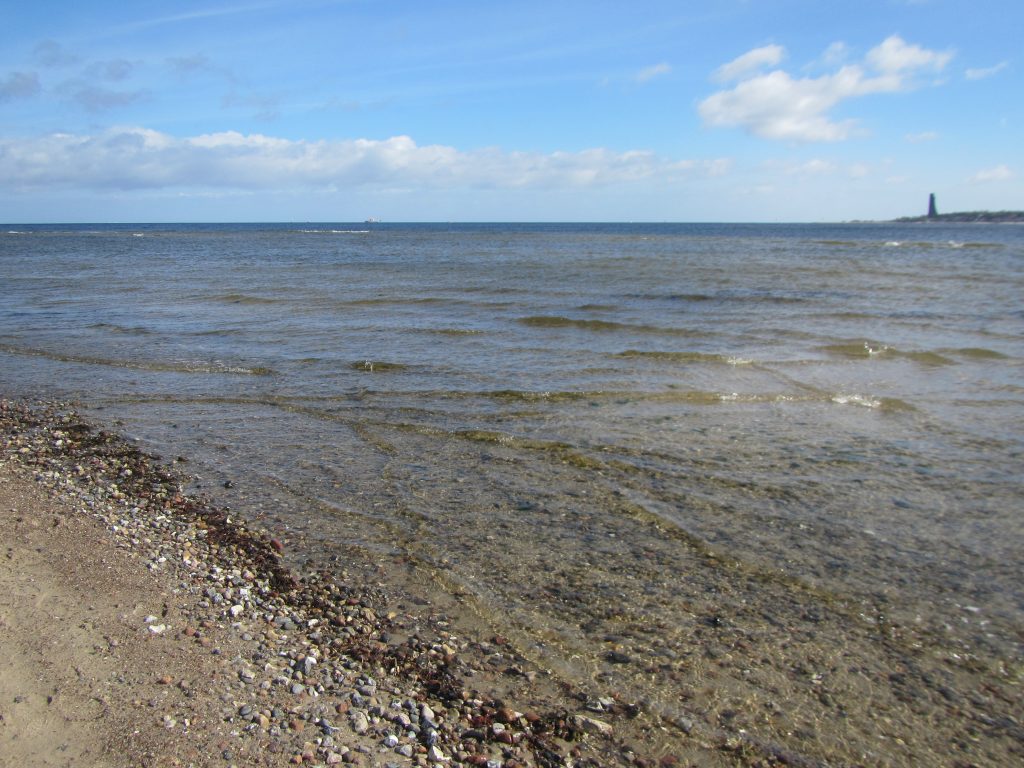
And those waves get deformed a lot, too!

And here we knew that it was a matter of minutes until those rain showers would be where we were…
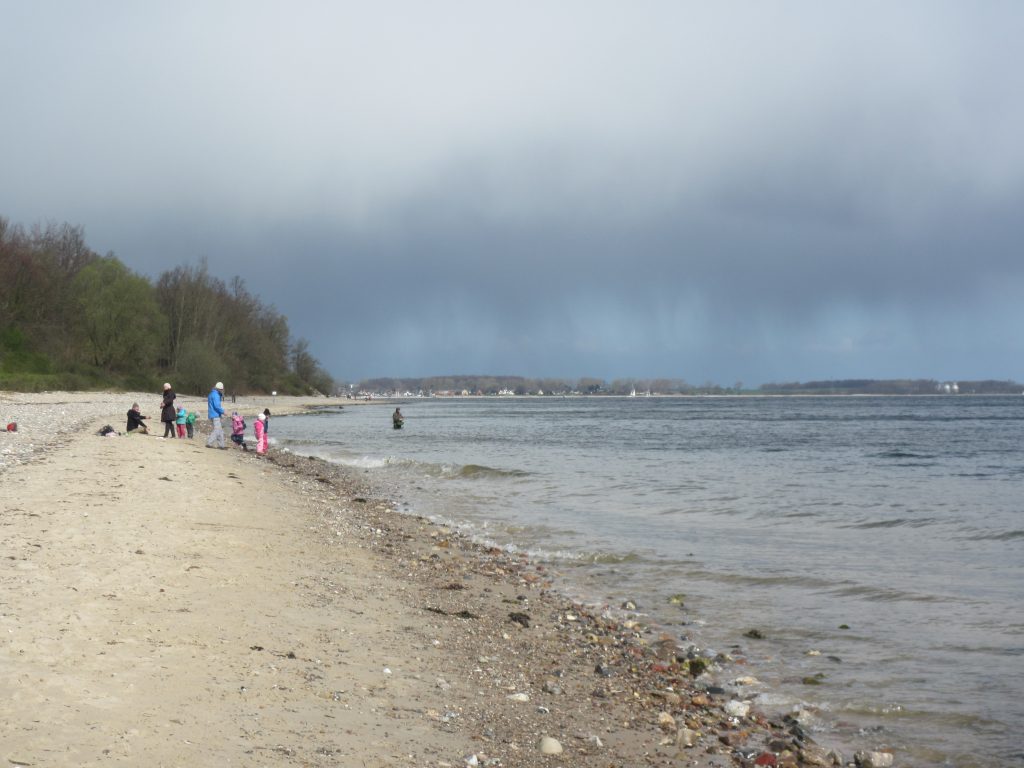
Luckily, this shower went over quickly, too.

And this is the kind of stuff the other courses will be dealing with: Awesome formations in the coast!
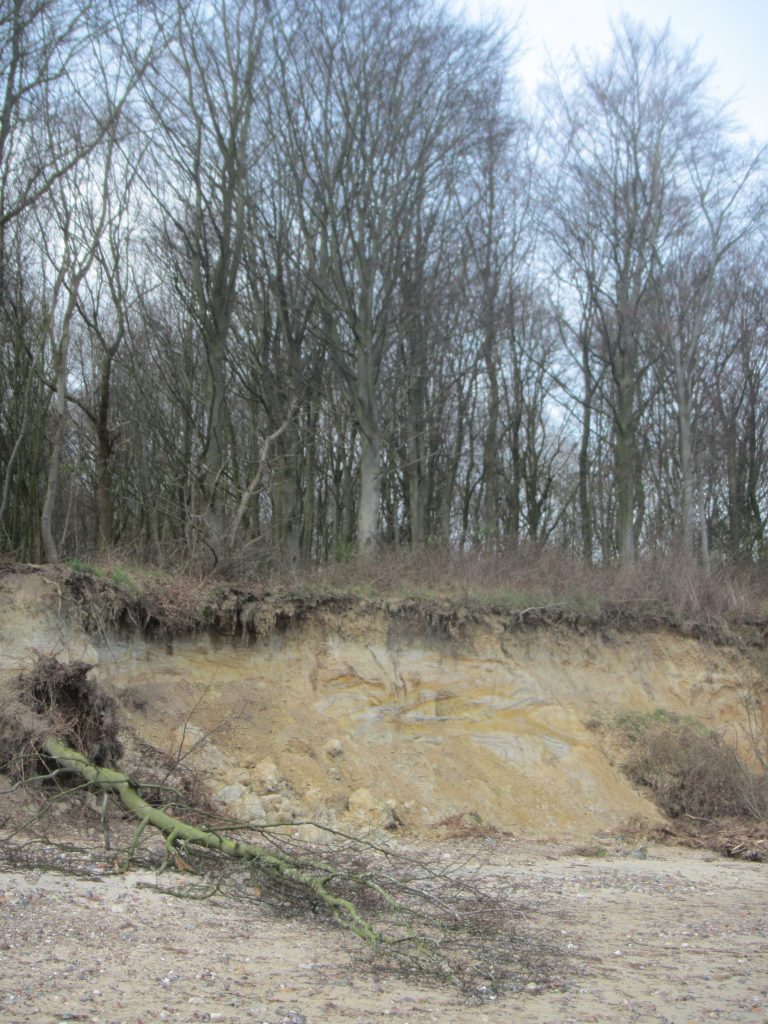
Ha, another weather front:
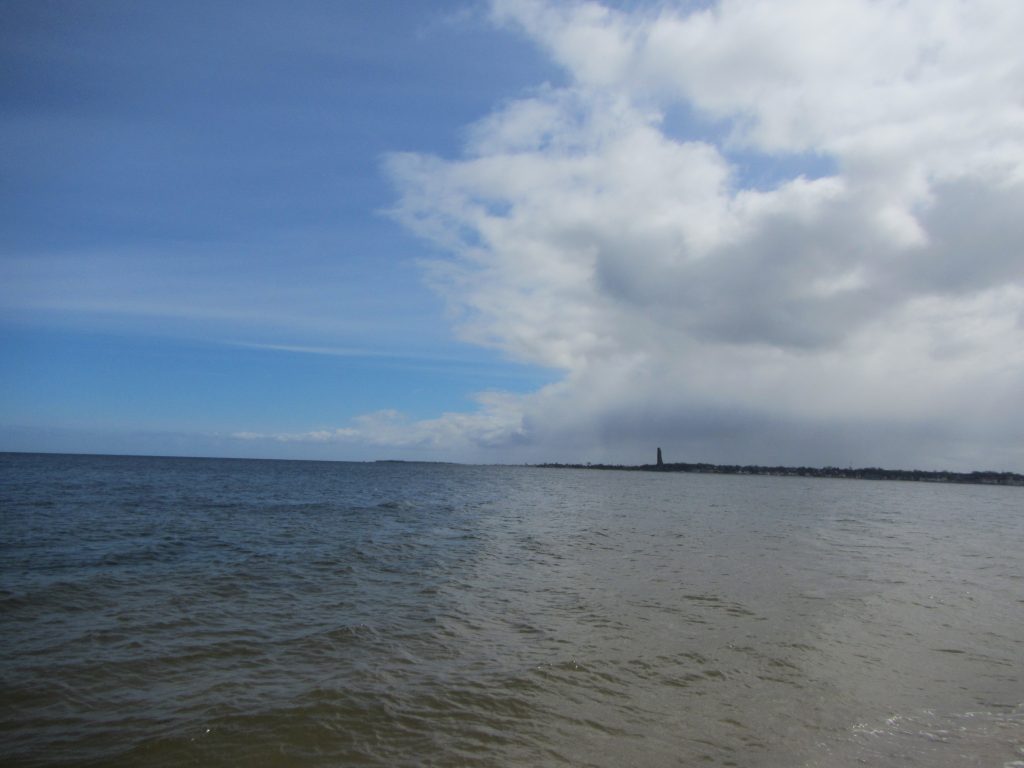
And this is my favourite geological feature: there are interesting features in the sand/soil/stone (however you call it?) and then erosion marks, clearly made by water, right below!
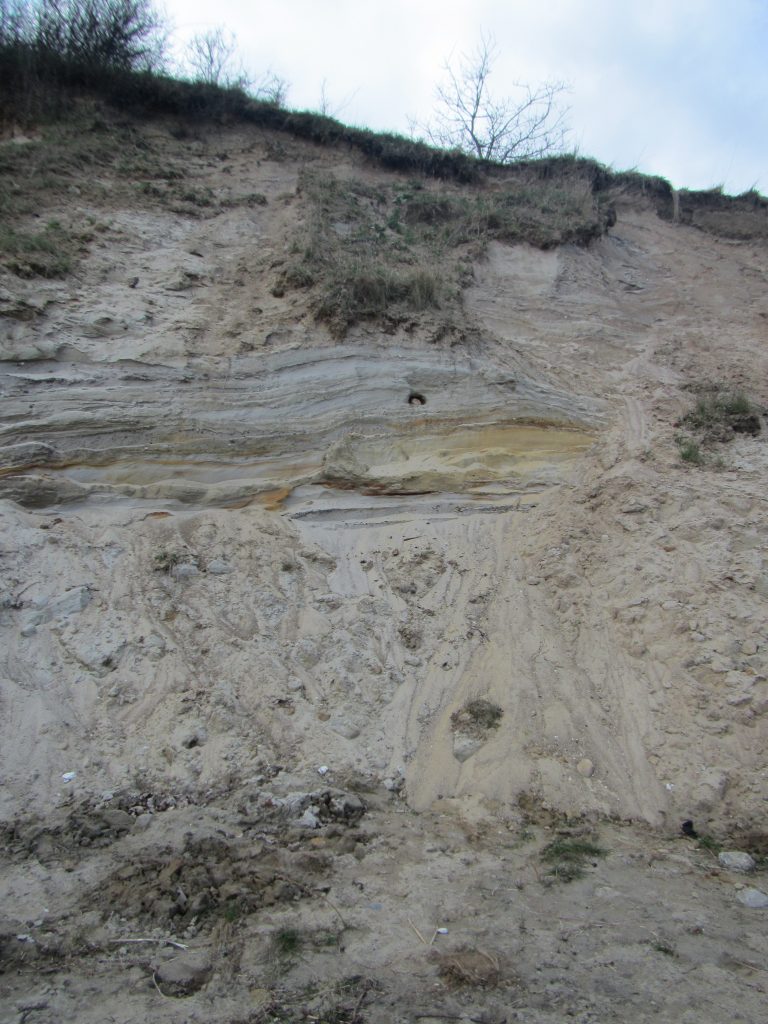
A little bit further along the coast, there are weird wave breakers and if the wind hadn’t died down, we would probably have been able to see more interesting waves than these…
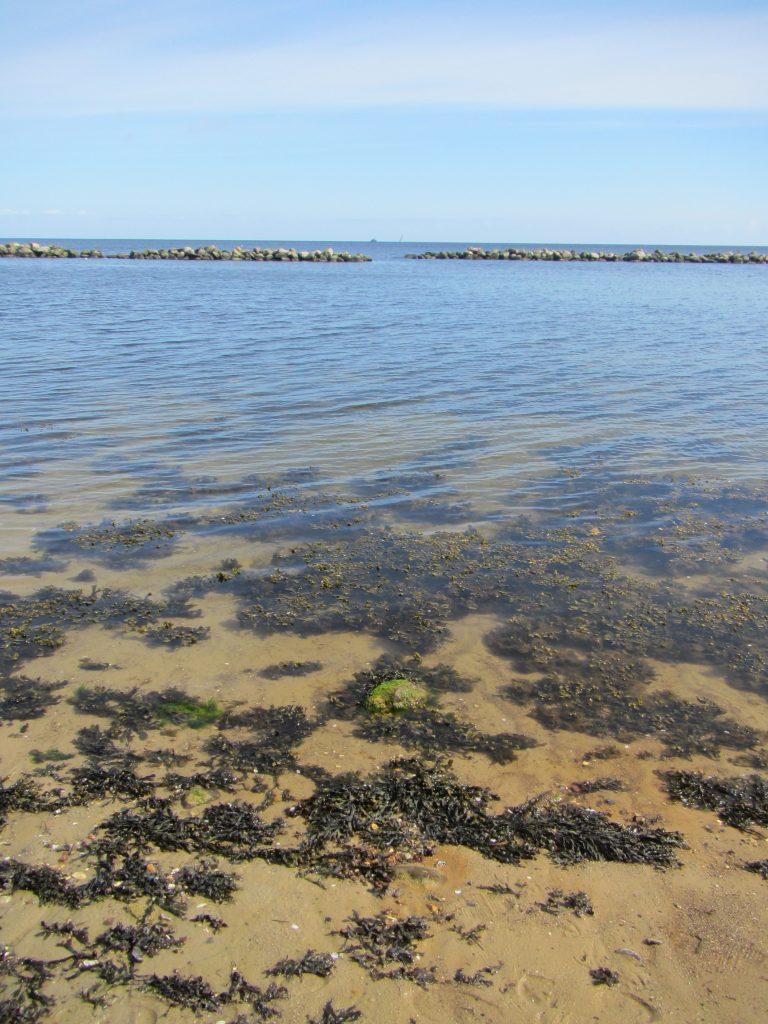
But the waves below were really cool: There were the ones that you clearly see on the picture at an angle to the coast, and then there were waves that came in perpendicular to the coast (so the wave crests were parallel to the coast) and they washed the other waves on the beach and back into the sea. I should really upload the movie…
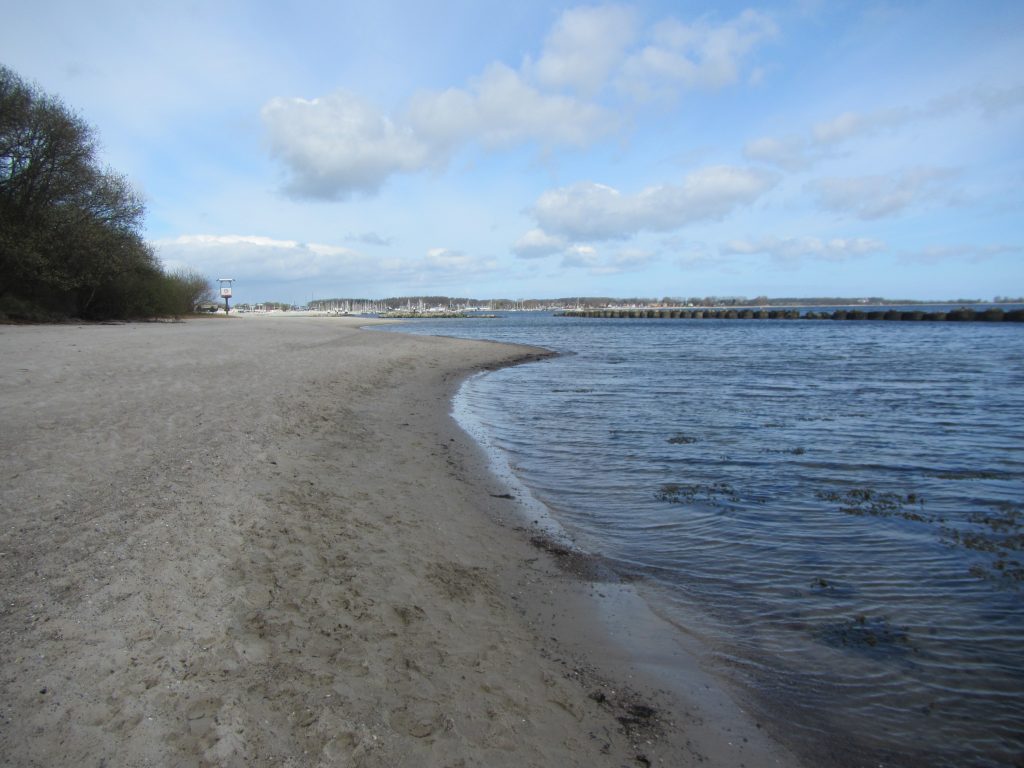
So those waves above caused ripples in the sand which are parallel to the water line, even though in the pictures the other wave field is a lot more visible!
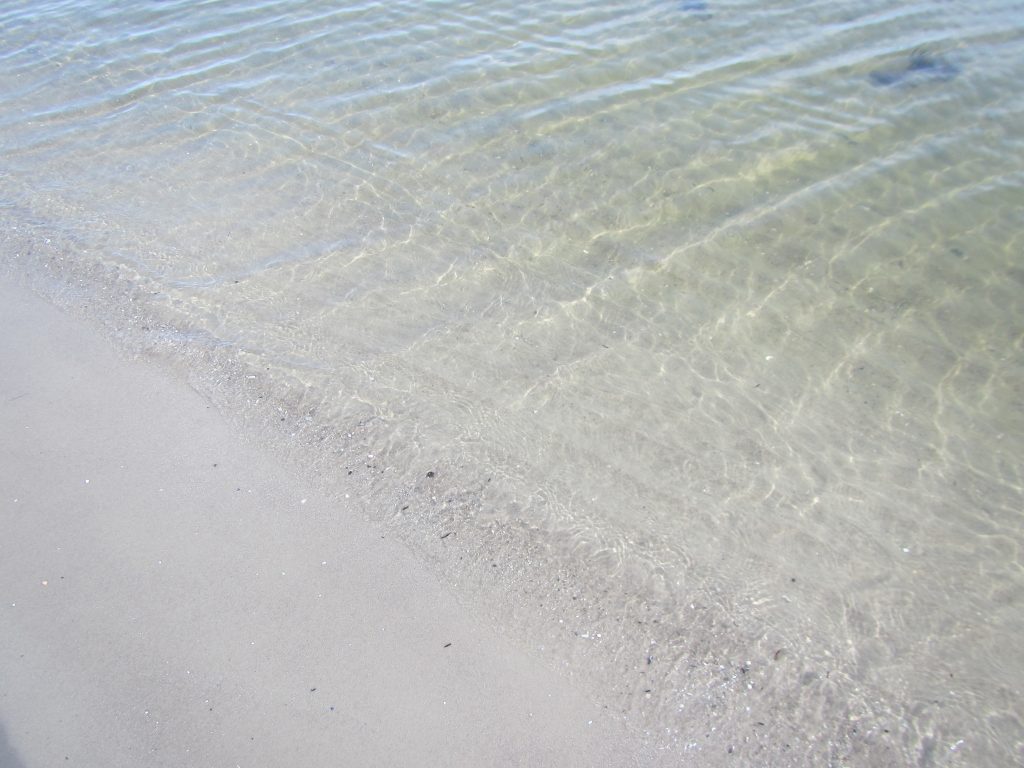
See?

We ended up in Schilksee and had a look around the marina. Apart from the typical wind / no wind resulting in waves / no waves, we saw……
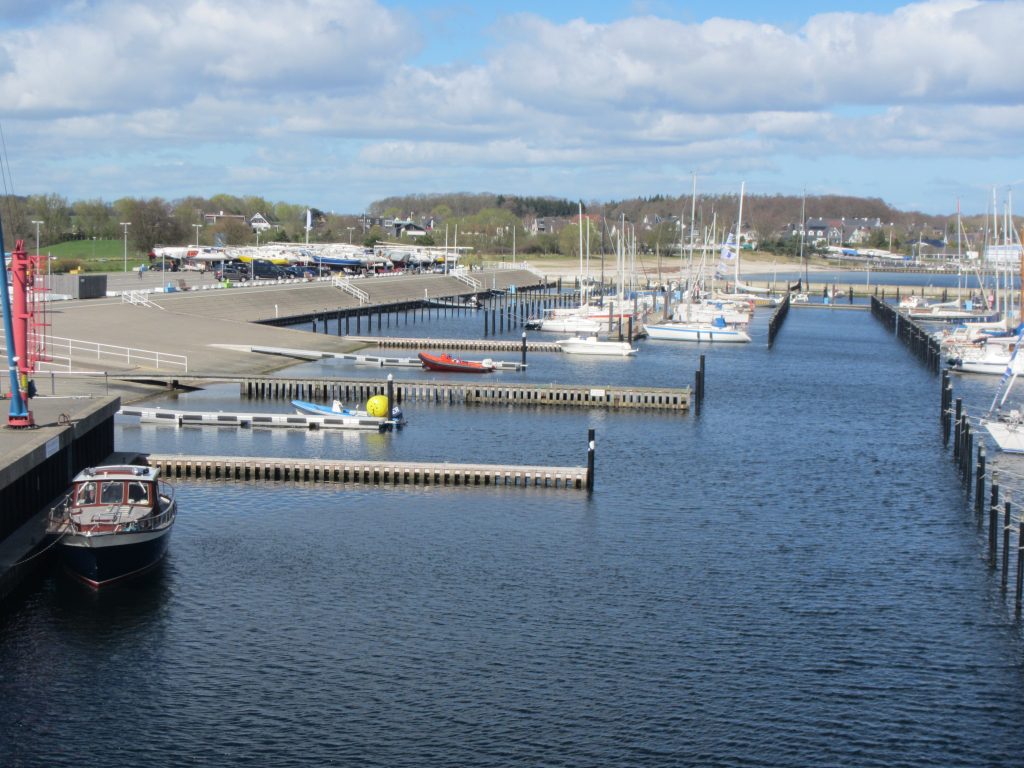
…this! Pretty cool, huh?
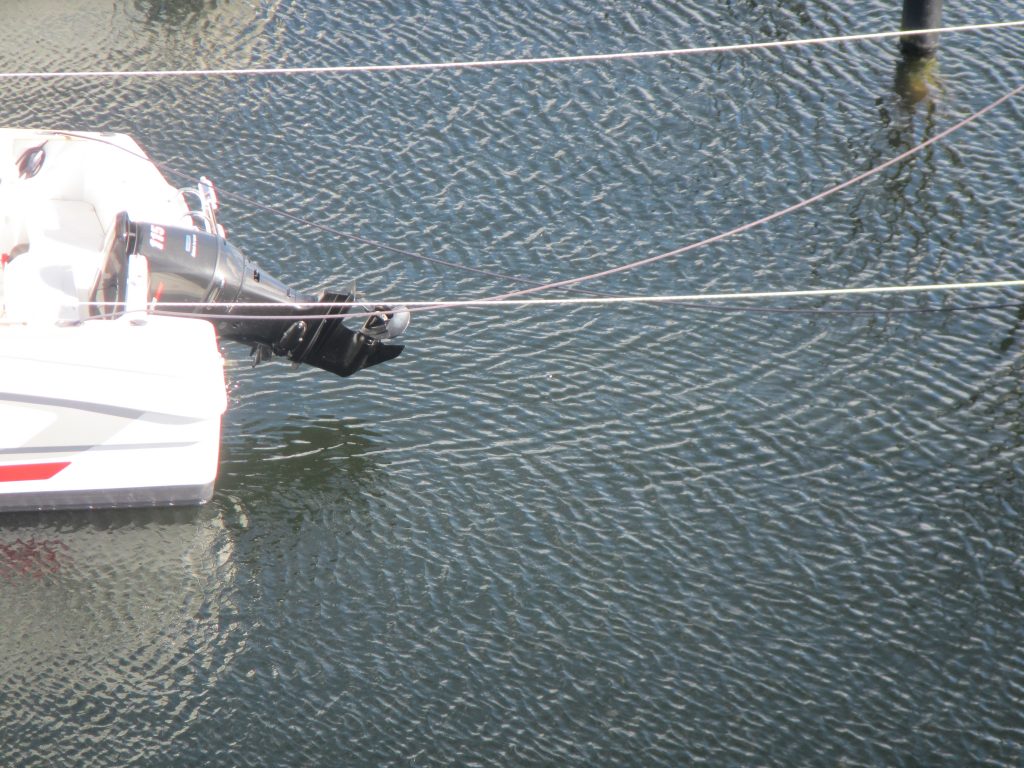
And again:
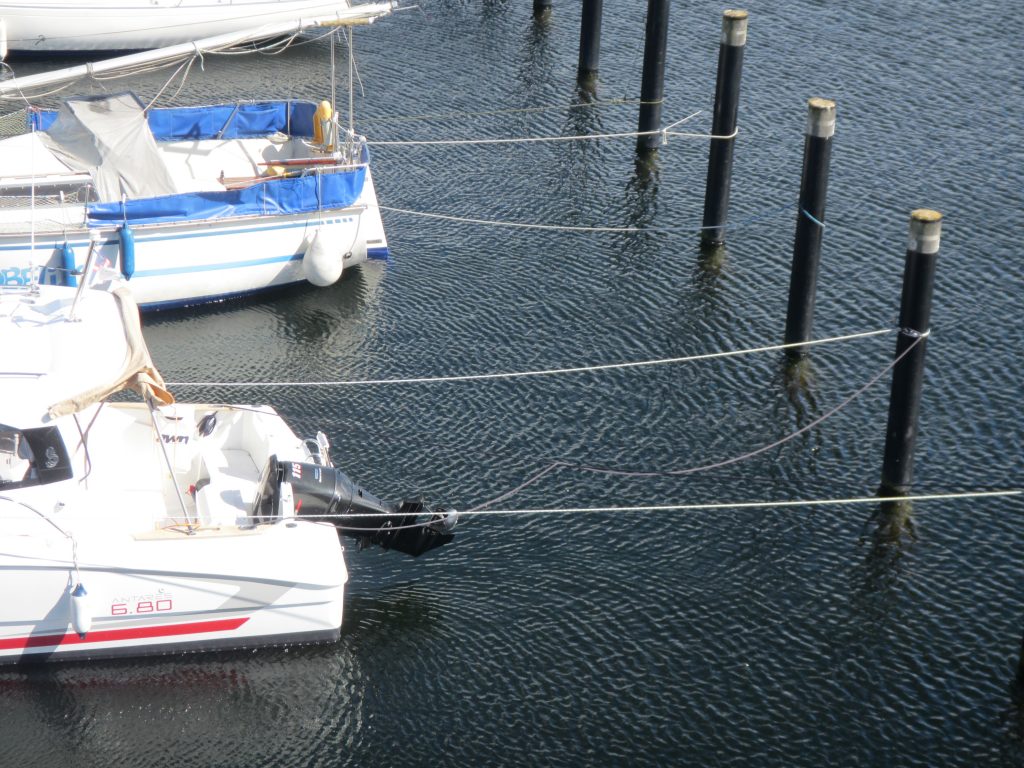
One last look at the coast near Bülk.
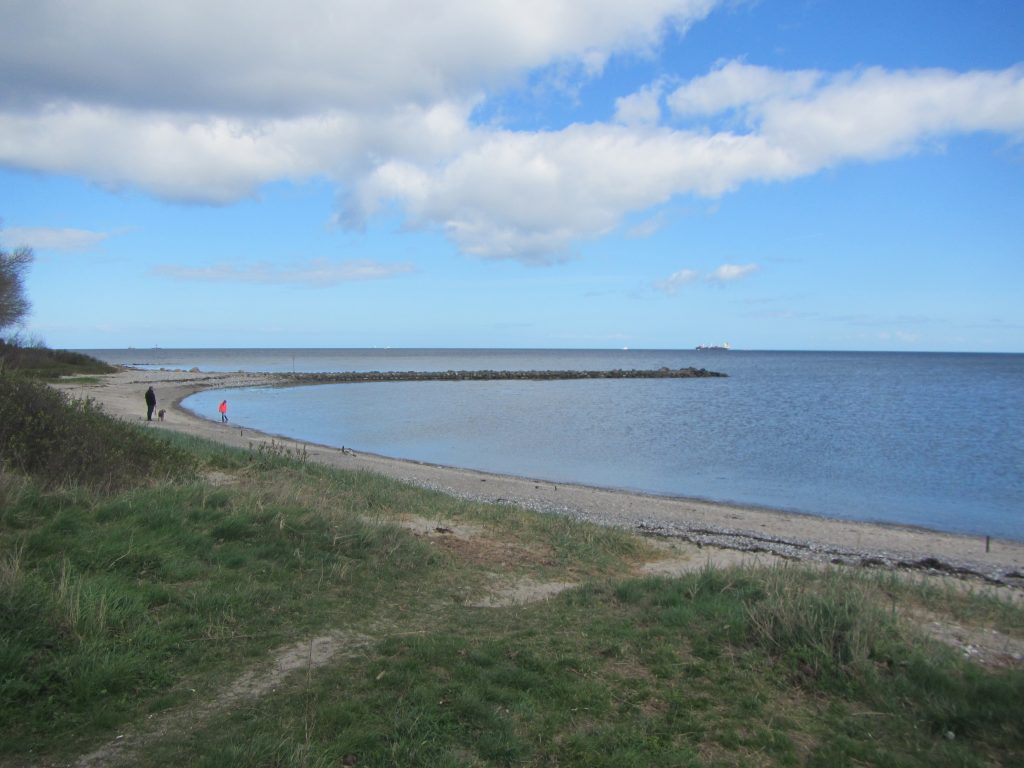
At this point, only one of us still felt like exploring every nook and cranny…

Even though there were some pretty nice wave fields, but we could see them from our vantage point without doing an extra step ;-)
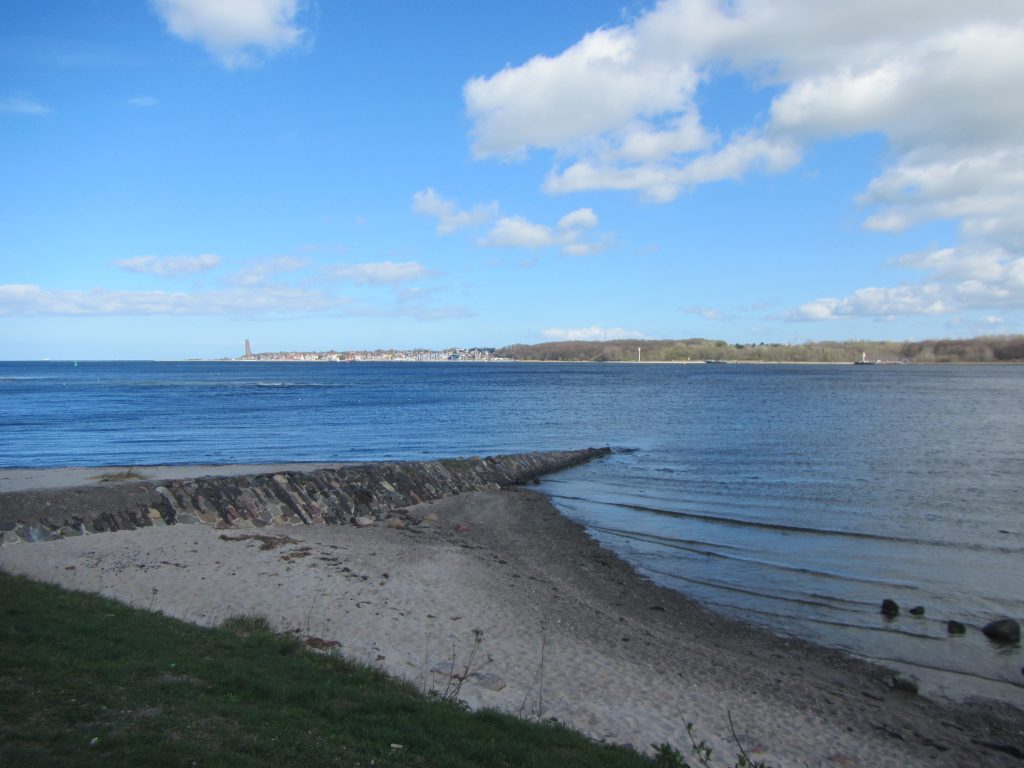
Actually, there were a couple of cool features on the beach still. What’s up with those little bays?!


We ended the day with trying this very cool contraption to measure the coast with. It was actually a lot of fun!
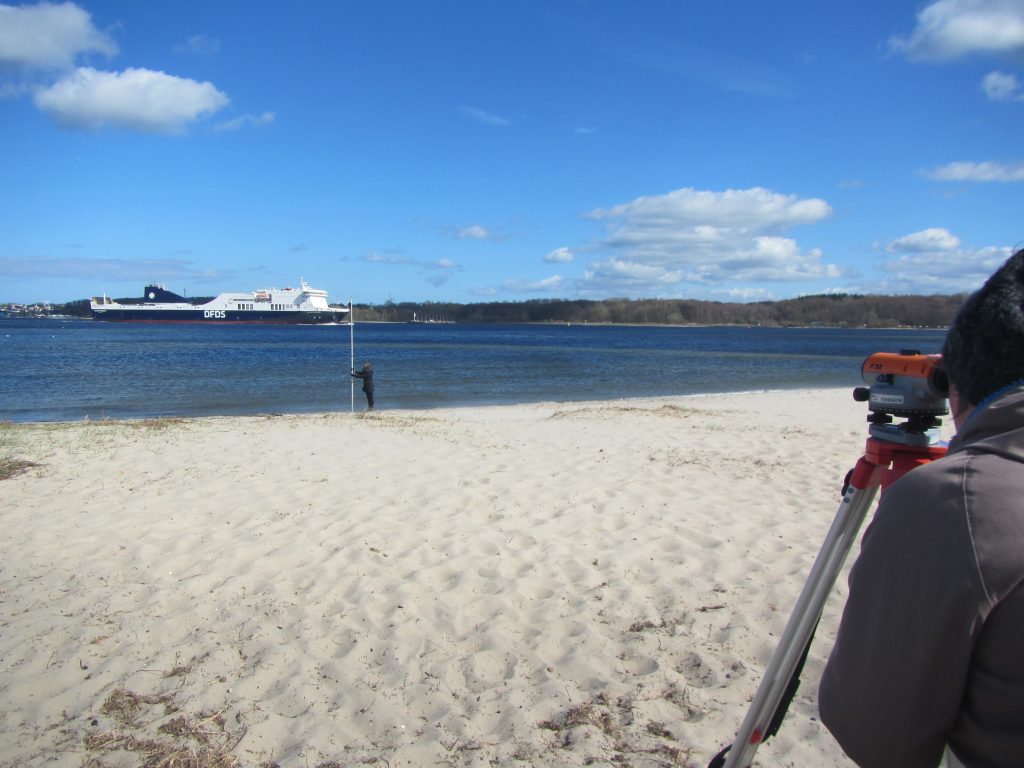
And you wouldn’t believe how much work it was to hold that ruler thingy in the wind!
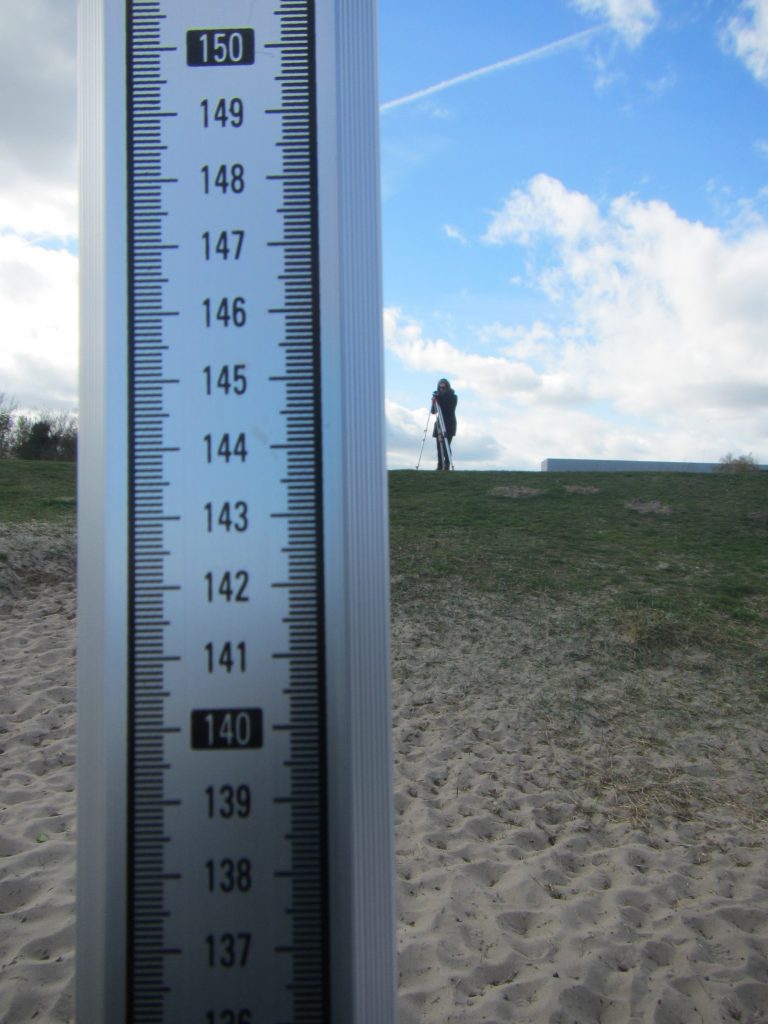
So yeah, that’s what we did. And how was your day in the office? :-)
I really like observing the wakes of ducks. Much easier to watch than those of ships because the scale is much more person-standing-on-the-sea-wall friendly. Also much less turbulence messing up the pattern. And you can get closer than you usually could.
All three pictures from the same morning, taken within a minute of each other!
Another awesome way to make my point about how waves look really differently depending on the angle one looks at them. Below for example my “other” way to observe waves: See how the wake leaves a shadow on the sea floor?
And some more ducks from a different day, because I like them :-)
One weekend, my godson’s family took me to the Explorado Duisburg, Germany’s largest museum for kids. And one thing we learned there was to make foam that you can ignite in your palm! (Although, to be fair, they didn’t tell the kids what they put in, I had to walk up on the stage and ask ;-))
Watch the movie to see how much fun my godson’s mom and I had once the kids were asleep!
Of course we repeated the experiment with the kids the next day, too. So much fun :-)
When I recently wrote about observing waves in a different way, I talked about light being focussed by the waves on the sea floor.
In the other post, I focussed on how looking at the light and dark pattern on the sea floor makes waves visible that are otherwise hard to see when just looking at the surface of the water:
But it also makes something else easier to notice, and that is how phase velocity and group velocity are really different. We know they should be, but on a choppy water surface it is really difficult to keep track of individual waves as they wobble through each other. But looking at the light and dark pattern on the sea floor, it actually becomes easier to observe. See those brighter areas and darker areas? Wave groups!
And in the movie below, you’ll see how they eat up waves that run into them, and how other wave crests come out in the front as they are overtaking the group. Cool! :-)
When we speak about “observing waves”, we usually mean looking at the water’s surface as an opaque surface that reflects the sky and where we see waves mainly due to being lit differently on different sides. But there are other ways to observe waves!
For example by how they focus light on the ground below. In the picture below you clearly see several groups of waves formed of smaller ripples.
Of course what we see when we look at the lighter and darker spots on the sea floor is not only an image of the waves above, but it is also influenced by the structure of the seafloor itself. You see that below: The ripples in the sand distort the image of the waves a little. Nevertheless, it isn’t too difficult to see which general shapes are due to the waves and which due to irregularities in the surface below.
Sometimes the lighting is such that you can see both into the water in some places and then see the sky reflected in others. The places that reflect the sky are showing waves the way we would usually observe them. In the picture below, we see wind ripples in the background, and in the foreground two main wave fields: one coming towards the viewer with crests parallel to the shore line on which I am standing, and a second field, whose crests are perpendicular to those of the first field.
But in the region where we can look into the water, only the second wave field shows up clearly in the lighter and darker regions on the sea floor!
Still, those regions give us a lot of information about the wave field that we don’t usually observe. For example all the small structures below don’t show up as clearly when we look at the sky-reflecting regions, do they?

I find it quite fascinating how all those structures that show up on the ground are a lot more difficult to observe when just looking at the sea surface.
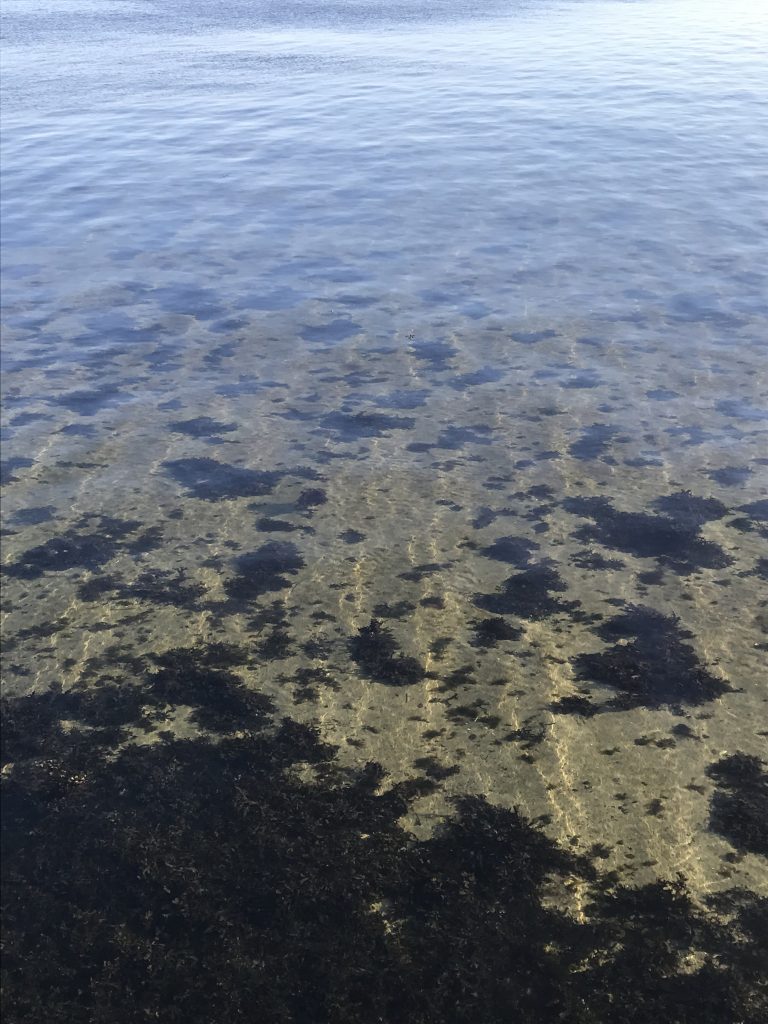
Would you have guessed that there are so many tiny ripples on the surface?
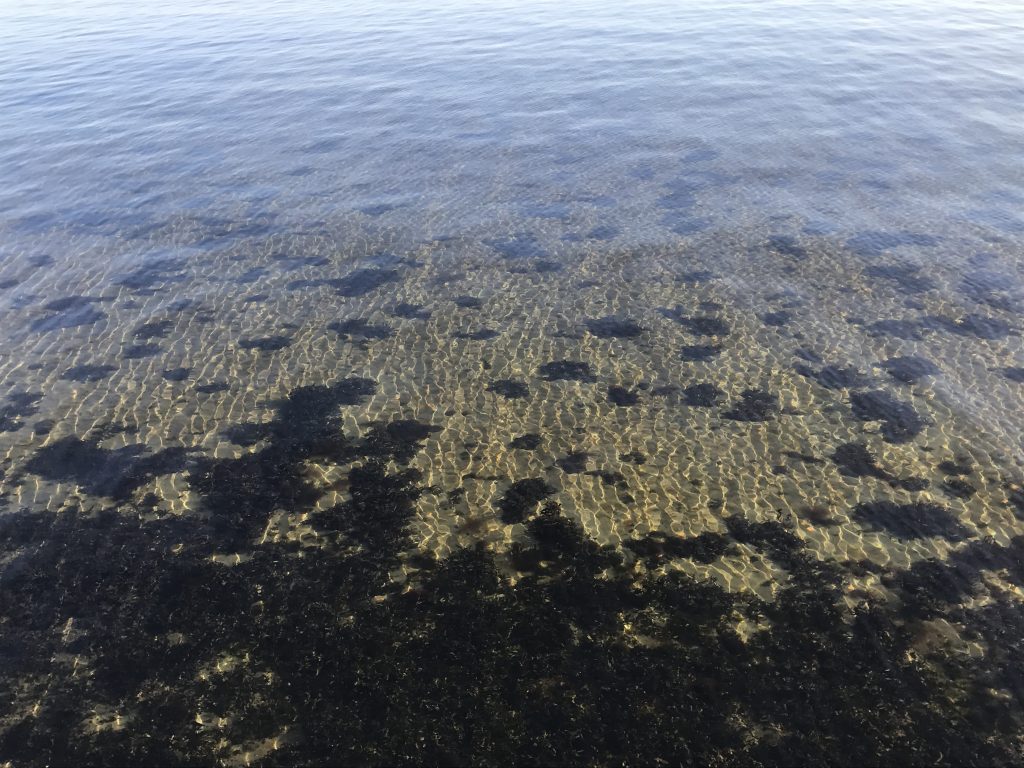
And also here, the wave crests perpendicular to the shore I am standing on show up a lot more clearly in the light and dark on the sea floor than on the surface, don’t they?
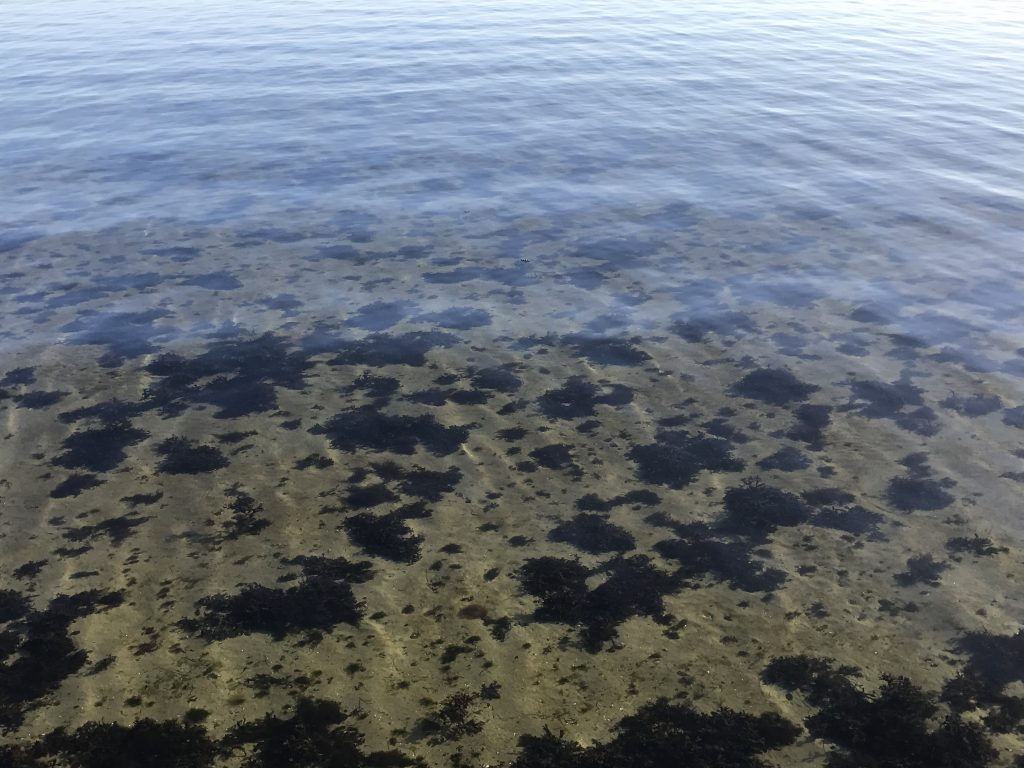
Even easier to spot in a movie:
Beautiful day to be watching the water! :-)